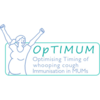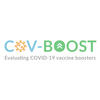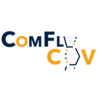Outputs & Policy Impact
Outputs & Policy Impact
This page lists the outputs and policy impact from the original NISEC programme. Outputs from NISEC II will be added here in due course.
NISEC1 investigators meeting presentations ( 12th January 2024, Oxford ) View Presentations
Outputs by Study :

Com-COV3 |
Paper |
Reactogenicity, immunogenicity and breakthrough infections following heterologous or fractional second dose COVID-19 vaccination in adolescents (Journal of Infection) | More |

OpTIMUM |
Paper |
Optimising the timing of whooping cough immunisation in mums (OpTIMUM) through investigating pertussis vaccination in pregnancy (The Lancet Microbe) | More |

Com-COV2 |
Paper |
Persistence of immune response in heterologous COVID vaccination schedules in the Com-COV2 study – A single-blind, randomised trial incorporating mRNA, viral-vector and protein-adjuvant vaccines (Journal of Infection) |
More |
|
Letter |
Reduced neutralisation of SARS-COV-2 Omicron-B.1.1.529 variant by post-immunisation serum (The Lancet) |
More | |
|
Paper |
Immunogenicity, safety, and reactogenicity of heterologous COVID-19 primary vaccination incorporating mRNA, viral-vector, and protein-adjuvant vaccines in the UK (The Lancet) | More | |
| Policy Impact |
WHO : Interim recommendations for use of the Novavax NVX-CoV2373 vaccine against COVID-19 (WHO iris) |
More |

COV-Boost |
Paper | Persistence of immune responses after heterologous and homologous third COVID-19 vaccine dose schedules in the UK (Journal of Infection) | More |
| Paper | Safety and immunogenicity of seven COVID-19 vaccines as a third dose (booster) following two doses of ChAdOx1 nCov-19 or BNT162b2 in the UK (The Lancet) | More | |
|
Policy Impact |
JCVI statement regarding a COVID-19 booster vaccine programme for winter 2021 to 2022 (Gov.uk) | More | |
| Policy Impact |
WHO : Interim recommendations for use of the Novavax NVX-CoV2373 vaccine against COVID-19 (WHO iris) |
More | |
| Paper | Persistence of immunogenicity after seven COVID-19 vaccines given as third dose boosters following two doses of ChAdOx1 nCov-19 or BNT162b2 in the UK: Three month analyses of the COV-BOOST trial (Journal of Infection) | More | |
| Paper | Safety, immunogenicity, and reactogenicity of BNT162b2 and mRNA-1273 COVID-19 vaccines given as fourth-dose boosters following two doses of ChAdOx1 nCoV-19 or BNT162b2 and a third dose of BNT162b2 (The Lancet Infectious Diseases) | More |

ComFluCOV |
Paper |
Safety and Immunogenicity of Concomitant Administration of COVID-19 Vaccines with Seasonal Influenza Vaccines (The Lancet) |
More |
|
Policy Impact |
JCVI statement regarding a COVID-19 booster vaccine programme for winter 2021 to 2022 (Gov.uk) | More | |
|
Policy Impact |
JCVI interim advice: potential COVID-19 booster vaccine programme winter 2021 to 2022 (Gov.uk) | More |

Com-COV |
Paper |
Heterologous prime-boost COVID-19 vaccination: initial reactogenicity data (The Lancet) |
More |
|
Paper |
Safety and immunogenicity of heterologous versus homologous prime-boost schedules with an adenoviral vectored and mRNA COVID-19 vaccine (The Lancet) |
More | |
| Paper | Effect of priming interval on reactogenicity, peak immunological response, and waning after homologous and heterologous COVID-19 vaccine schedules | More |

What's the STORY |
Policy Impact | What’s the STORY results presented to UK SAGE | More |
| Paper | Community seroprevalence of SARS-CoV- 2 in children and adolescents in England, 2019–2021 (ADC) | More | |
| Paper | Serum HCoV-spike specific antibodies do not protect against subsequent SARS-CoV-2 infection in children and adolescents (iScience) | More |

iMAP3 |
Paper | An observational, cohort, multi-centre, open label phase IV extension study comparing preschool DTAP-IPV booster vaccine responses in children (Vaccine) | More |
Output Details
WHO : Interim recommendations for use of the Novavax NVX-CoV2373 vaccine against COVID-19: interim guidance, 20 December 2021
From the guidance :
"However, the available evidence on NVX-CoV2373 in the context of heterologous usage is currently limited to two studies assessing the use of NVX-Cov2373 as a second or booster dose (8, 9).
8. Munro APS, Janani L, Cornelius V, Aley PK, Babbage G, Baxter D et al. Safety and immunogenicity of seven COVID-19 vaccines as a third dose (booster) following two doses of ChAdOx1 nCov-19 or BNT162b2 in the UK (COV-BOOST): a blinded, multicentre, randomised, controlled, phase 2 trial. The Lancet. doi: 10.1016/S0140-6736(21)02717-3.
9. Stuart ASV, Shaw RH, Liu X, Greenland M, Aley PK, Andrews NJ et al. Immunogenicity, safety, and reactogenicity of heterologous COVID-19 primary vaccination incorporating mRNA, viral-vector, and protein-adjuvant vaccines in the UK (Com-COV2): a single-blind, randomised, phase 2, non-inferiority trial. Lancet. 2021. doi: 10.1016/S0140-6736(21)02718-5."
Reduced neutralisation of SARS-CoV-2 omicron B.1.1.529 variant by post-immunisation serum
Data published in December 2021 from the COMCOV2 study relates to the Omicron variant of concern and have been presented in a letter. These data show that immune system antibody responses (neutralising antibodies) against the Omicron variant are lower in people who have had two doses of Oxford/AstraZeneca than two doses of Pfizer COVID-19 vaccine.
Immunogenicity, safety, and reactogenicity of heterologous COVID-19 primary vaccination incorporating mRNA, viral-vector, and protein-adjuvant vaccines in the UK
The results of this study show multiple vaccines are appropriate to complete primary immunisation following priming with BNT or ChAd, facilitating rapid vaccine deployment globally and supporting recognition of such schedules for vaccine certification.
Safety and immunogenicity of seven COVID-19 vaccines as a third dose (booster) following two doses of ChAdOx1 nCov-19 or BNT162b2 in the UK
Six different COVID-19 boosters are safe and provoke strong immune responses in people who have previously received a two-dose course of ChAdOx1-nCov19 (Oxford–AstraZeneca [ChAd]) or BNT162b2 (Pfizer-BioNTech [BNT]), according to the first randomised trial of boosters given after two doses of either vaccine, published in The Lancet.
JCVI statement regarding a COVID-19 booster vaccine programme for winter 2021 to 2022
The JVCI recommendations to Government regarding booster vaccinations, which have been accepted as part of the government's Covid Autumn and Winter Plan, draw heavily on the ouputs from these two NISEC studies.
Safety and Immunogenicity of Concomitant Administration of COVID-19 Vaccines with Seasonal Influenza Vaccines
The results of ComFluCOV have shown it is safe for people to be vaccinated against COVID-19 and influenza at the same time. The results of this study have been presented to the JCVI to aid policy makers in planning vaccination programmes.
Com-COV Results
The results from these studies are directly informing the use of ‘Mix and ‘Match’ COVID-19 vaccine schedules in the UK and globally. These results have shown that receiving mixed schedules of the ChAdOx1 nCOV-19 (‘Oxford AstraZeneca’) and BNT62b2 (Pfizer) vaccines administered at a 4 week interval generates higher antibodies and T cells against the COVID-19 virus than two doses of the ChadOx1 nCOV-19 vaccine. We also found that these mixed schedules resulted in a greater frequency of short terms side effects such as fatigue and feverishness. Initial results are available at:
Heterologous prime-boost COVID-19 vaccination: initial reactogenicity data (The Lancet)
and
Safety and Immunogenicity Report from the Com-COV Study (The Lancet)
These results have informed use of mixed schedules in the UK and internationally, demonstrating that the ChAdOx1 nCOV-19 followed by BNT62b2 may be appropriate according to local and individual circumstances.
JCVI interim advice: potential COVID-19 booster vaccine programme winter 2021 to 2022
ComFluCOV, led by Dr Rajeka Lazarus at University Hospitals Bristol and Weston NHS Foundation Trust, is evaluating the co-administration of COVID-19 and influenza vaccines and has directly informed the planned implementation of the 2021/2022 influenza and COVID-19 booster campaigns.
What’s the STORY
This study has collected over 3500 blood samples from nearly 3000 children, adolescents and young adults from November 2019 to June 2021. Initially designed to evaluate the concentrations of antibodies against vaccine preventable diseases such as diphtheria and group C meningococcus (MenC) in 0 to 24 year olds across England, this was adapted in response to the COVID-19 outbreak to conduct a unique, community based assessment of SARs-CoV-2 infection and immunity throughout the pandemic. These results have been presented to UK SAGE to inform policy regarding re-opening of schools and risk factors for infections.
Persistence of immunogenicity after seven COVID-19 vaccines given as third dose boosters following two doses of ChAdOx1 nCov-19 or BNT162b2 in the UK: Three month analyses of the COV-BOOST trial
84 days after a third dose of COVID-19 vaccine the decay rates of humoral response were different between vaccines. Adenoviral vector vaccine anti-spike IgG concentrations at D84 following BNT/BNT initial doses were similar to or even higher than for a three dose (BNT/BNT/BNT) schedule. Half dose BNT immune responses were similar to full dose responses. While high antibody tires are desirable in situations of high transmission of new variants of concern, the maintenance of immune responses that confer long-lasting protection against severe disease or death is also of critical importance. Policymakers may also consider adenoviral vector, fractional dose of mRNA, or other non-mRNA vaccines as third doses.
Read Now (Journal of Infection)
Effect of priming interval on reactogenicity, peak immunological response, and waning after homologous and heterologous COVID-19 vaccine schedules: exploratory analyses of Com-COV, a randomised control trial
Priming COVID-19 vaccine schedules have been deployed at variable intervals globally, which might influence immune persistence and the relative importance of third-dose booster programmes. Here, we report exploratory analyses from the Com-COV trial, assessing the effect of 4-week versus 12-week priming intervals on reactogenicity and the persistence of immune response up to 6 months after homologous and heterologous priming schedules using the vaccines BNT162b2 (tozinameran, Pfizer/BioNTech) and ChAdOx1 nCoV-19 (AstraZeneca).
Read Now (The Lancet Respiratory Medicine)
Safety, immunogenicity, and reactogenicity of BNT162b2 and mRNA-1273 COVID-19 vaccines given as fourth-dose boosters following two doses of ChAdOx1 nCoV-19 or BNT162b2 and a third dose of BNT162b2 (COV-BOOST): a multicentre, blinded, phase 2, randomised trial
Some high-income countries have deployed fourth doses of COVID-19 vaccines, but the clinical need, effectiveness, timing, and dose of a fourth dose remain uncertain. We aimed to investigate the safety, reactogenicity, and immunogenicity of fourth-dose boosters against COVID-19.
Read Now (The Lancet Infectious Diseases)
An observational, cohort, multi-centre, open label phase IV extension study comparing preschool DTAP-IPV booster vaccine responses in children whose mothers were randomised to one of two pertussis-containing vaccines or received no pertussis-containing vaccine in pregnancy in England
An antenatal pertussis vaccination programme was introduced in 2012 in the UK in the context of a national outbreak of pertussis. It has been shown that a lower antibody response to primary immunisation can be seen for certain pertussis antigens in infants born to women who received pertussis-containing antenatal vaccines, a phenomenon known as blunting. The longer-term impact of this has not been documented previously, and accordingly was evaluated in this study.
Persistence of immune response in heterologous COVID vaccination schedules in the Com-COV2 study – A single-blind, randomised trial incorporating mRNA, viral-vector and protein-adjuvant vaccines
Heterologous COVID vaccine priming schedules are immunogenic and effective. This report aims to understand the persistence of immune response to the viral vectored, mRNA and protein-based COVID-19 vaccine platforms used in homologous and heterologous priming combinations, which will inform the choice of vaccine platform in future vaccine development.
Read Now (Journal of Infection)
Reactogenicity, immunogenicity and breakthrough infections following heterologous or fractional second dose COVID-19 vaccination in adolescents (Com-COV3): A randomised controlled trial
This was the first study to investigate the reactogenicity and immunogenicity of heterologous or fractional second dose COVID-19 vaccine regimens in adolescents.
Read Now (Journal of Infection)
Optimising the timing of whooping cough immunisation in mums (OpTIMUM) through investigating pertussis vaccination in pregnancy: an open-label, equivalence, randomised controlled trial
Pertussis vaccination in pregnancy is recommended in many countries to provide protection to young infants. The best timing for this vaccination is uncertain. In the UK, vaccination is recommended between 16 weeks and 32 weeks of gestation. In this trial we aimed to investigate the equivalence of three time periods for pertussis vaccination in pregnancy.
Persistence of immune responses after heterologous and homologous third COVID-19 vaccine dose schedules in the UK: eight-month analyses of the COV-BOOST trial
COV-BOOST is a multicentre, randomised, controlled, phase 2 trial of seven COVID-19 vaccines used as a third booster dose in June 2021. Monovalent messenger RNA (mRNA) COVID-19 vaccines were subsequently widely used for the third and fourth-dose vaccination campaigns in high-income countries. Real-world vaccine effectiveness against symptomatic infections following third doses declined during the Omicron wave. This report compares the immunogenicity and kinetics of responses to third doses of vaccines from day (D) 28 to D242 following third doses in seven study arms.
Read Now (Journal of Infection)
Community seroprevalence of SARS-CoV- 2 in children and adolescents in England, 2019–2021
To understand community seroprevalence of SARS-CoV-2 in children and adolescents. This is vital to understanding the susceptibility of this cohort to COVID-19 and to inform public health policy for disease control such as immunisation. We conducted a community- based cross-sectional seroprevalence study in participants aged 0–18 years old recruiting from seven regions in England between October 2019 and June 2021 and collecting extensive demographic and symptom data.
Read Now (Archives of Disease in Childhood)
Serum HCoV-spike specific antibodies do not protect against subsequent SARS-CoV-2 infection in children and adolescent
SARS-CoV-2 infections in children are generally asymptomatic or mild and rarely progress to severe disease and hospitalization. Why this is so remains unclear. Here we explore the potential for protection due to pre-existing cross-reactive seasonal coronavirus antibodies and compare the rate of antibody decline for nucleocapsid and spike protein in serum and oral fluid against SARS-CoV-2 within the pediatric population. No differences in seasonal coronaviruses antibody concentrations were found at baseline between cases and controls, suggesting no protective effect from pre-existing immunity against seasonal coronaviruses. Antibodies against seasonal betacoronaviruses were boosted in response to SARS-CoV-2 infection. In serum, anti-nucleocapsid antibodies fell below the threshold of positivity more quickly than anti-spike protein antibodies.
NISEC1 investigators meeting presentations
2. iMAP3
3. OpTIMUM
5. COV-Boost
6. ComFluCOV
7. Preg-CoV
8. Com-COV 3



